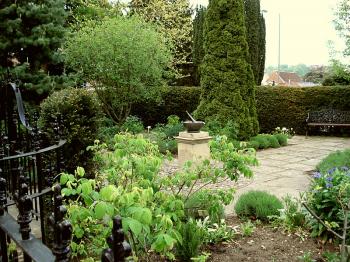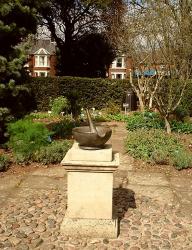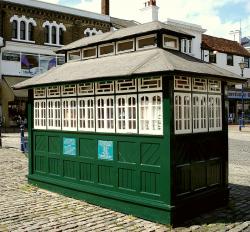Archive for 26 September 2007
William Ransom Physic Garden
Physic being Greek for ‘Body’ I think belies the garden’s supposed usage. Ornamental, rather than functional. It is called the ‘William Ransom Physic Garden’ after the 19th Century Millionaire Hitchin Physician and Chemist, William Ransom, who founded the pharmaceutical chemist in Bancroft (Which is now Sainsbury’s and the new Lavendar Fields apartments); and is laid out with plants and herbs that the 17th Century Herbaslist Nicholas Culpeper might have used medicinally too.
The garden was opened by Prof Harold Ellis on 20th May 1990 after the land was given over from Hitchin Museum that lies immediately to it’s west. It opens daily as part of the Hitchin Museum Experience and is a wonderful haven of tranquility. Note worthy is the Bronze/Brass sundial that has been made to resemble a Physican’s/Herbalist’s/Chemist’s Mortar and Pestle. Art using form to immitate function. A nice touch I think.
Market Place Cabin
This Edwardian Cabmen’s Shelter used to stand on the forecourt of Hitchin Railway Station and was paid for by the donations of rail users collected by Edward Boxall who ran a cab business from The Red Lion that used to be in Bucklersbury (Now the new age shop ‘Harvest Moon’) It was used as a shelter for cab drivers waiting for fares until 1976 when it was sold by British Rail and stood in the garden of John and Patsy Myatt. They donated it to the town, whereby it was restored and promoted by The Hitchin Historical Society and Hitchin businesses. On the 10th Of October 1998, it was finally handed over to the Hitchin community and moved to The Market Place.
Since then, the Hitchin Historical Society have lampooned the Cabin on their Christmas cards; one famous card’s comments being, it was designed by a little known Chinese architect Lu Tien. He thought he’d been asked to design a lantern, and when the drawings were returned to the railway company, the engineers misunderstood his size specifications and accordingly built it as a full sized shelter. The text was littered with shameless clues such as the name Crisp. E. Duck as well as the name Lu Tien, which is a parody of Sir Edward Lutyens name. (A great Victorian Architect) Unfortunately, this story was picked up by a local railway historian who failed to spot the obvious clues and included the curious history of the cabin in his recently published book on the local railway.


